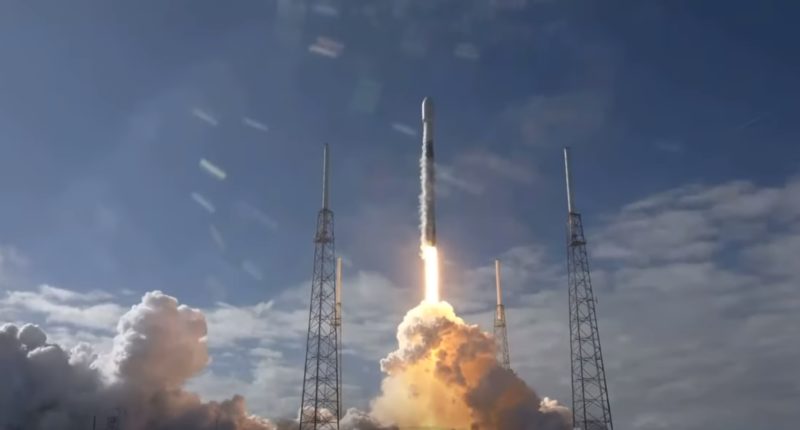SpaceX has, yet again, successfully launched another batch of its Starlink constellation, adding another batch of 60 satellites to the network. This brings the total number of low Earth orbiting satellites close to 300, with the launch being company’s third successful attempt in the year starting from January 1st.
Starlink is SpaceX’s answer to the raging discrimination that various people face when it comes to access to Internet. The company plans to use its constellation of satellites to provide high speed Internet services all around the world, with ‘relatively’ cheap prices. The company says that the Internet provided by Starlink will be 5 to 10 times faster than the one we have right now.
However, the mission saw a minor deviation from perfection, when the booster of the Falcon 9 rocket, that had flown three times before and saw the fastest turn around of 62 days before becoming operational, failed to land at its intended landing pad and ended up in the ocean. The company says that the landing was still a soft one, and it should be able to recover it, hopefully. Falcon 9’s first stage previously launched the CRS-17 mission in May 2019, the CRS-18 mission in July 2019, and the JCSAT-18/Kacific1 mission in December 2019.
If things went to plan, this would have been the company’s 50th successful landing, as the last failed landing was in June 2019.
This was also a special launch since from this time onwards, the company will aim to salvage both halves of the fairing, a protective shell that encloses the payload of satellites aboard the rocket as they fly through Earth’s atmosphere on the way to space.
The company aims to start its services by later this year in America and Canada, and has scheduled launches to meet that goal specifically. However, the company plans to expand globally in the near future, and provide high speed broadband services to every individual on the planet.
Each Starlink satellite weights approximately 260 kg and features a compact, flat-panel design that minimizes volume, allowing for a dense launch stack to take full advantage of Falcon 9’s launch capabilities. With four powerful phased array and two parabolic antennas on each satellite, an enormous amount of throughput can be placed and redirected in a short time, for an order of magnitude lower cost than traditional satellite-based internet.
In other news, a report came out a few days that says that Starlink could become a separate entity from SpaceX and a future IPO isn’t out of the question, a statement that CEO Elon Musk cannot be really thrilled about(since he’s against the idea of his baby going public). However, the company says that SpaceX will not go public until it is able to land passengers on Mars on a regular basis(which can also be a fancy way of saying never).
The Tech Portal is published by Blue Box Media Private Limited. Our investors have no influence over our reporting. Read our full Ownership and Funding Disclosure →






